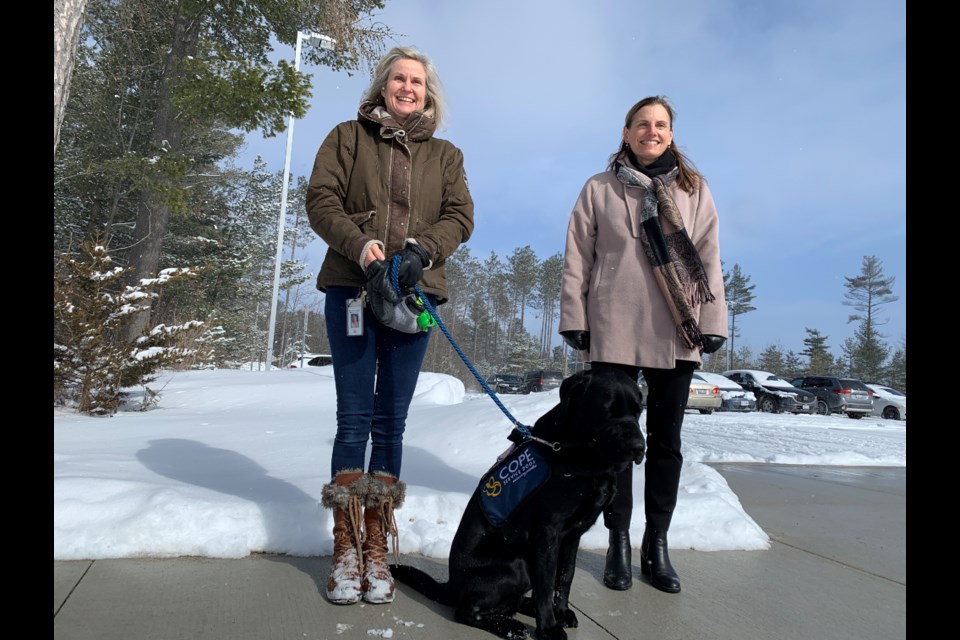Two Simcoe County high schools will have some furry new students in the fall.
The Simcoe County District School Board and Canine Opportunity, People Empowerment (COPE) Service Dogs have signed a three-year partnership to officially bring the organization’s Canine’s in the Classroom (CIC) program to Barrie North Collegiate and Bear Creek Secondary School in Barrie beginning in September 2022.
COPE founder Jane Boake said the CIC program provides students the opportunity to train a dog, which will go on to become a service or therapy dog, adding the unique learning opportunity also helps kids build self confidence.
“We give them this responsibility and we trust them to do it… and they rise to that challenge,” Boake said. “The dogs, not only are they cuddly and stress relievers for the kids, they also serve as teachers, and they provide students with feedback.
"And wouldn’t you rather have feedback from a non-judgmental dog? For some of the kids, it’s the reason why they get out of bed and get to school," she added.
The program has been in local schools since 2003, but the new agreement has helped make it “more official," Boake said.
School board superintendent Charlene Scime said it was actually her Grade 11 English class in 2003 where Canines in the Classroom first began, adding the three-year partnership agreement will allow them to expand the program.
In addition to having dogs in the building, five staff members are set to begin training today, which will allow them to be able to deliver the program in their classrooms, something Scime described as “an exciting change."
Having been involved in the program personally, Scime said the experience she and her class had nine years ago was “tremendous."
“The dogs came into the classroom twice a week and immediately I was able to see improved attendance on the days the dogs were there, increased engagement and a real sense of purpose among the students who were learning to train the dogs,” she said.
“Students learn up to 90 commands and they see purpose beyond themselves because they know they’re contributing to training dogs that will become service or therapy dogs in the community," Scime added. "We see students who develop confidence as learners, they develop leadership skills, their sense of well-being is enhanced. … There are many, many positives to this partnership.”
Depending on how the program is structured in the school, Scime said participants are often able to earn a class credit.
“They could be in a Grade 9 English class, so within that course, in addition to working with the dogs, they’re completing other elements of the curriculum that in total will help them earn the credit," she said.
Training a dog to become a service dog takes approximately two years, said Boake, at which point the dogs are ready to be placed with their new owners, where they will help offer their owners a much-needed sense of safety and independence.
“Lots of people aren’t getting out in the community because it’s too cumbersome or they don’t have help,” she said.
Boake said their service dog can take on a lot of physical tasks that not only give the owner a sense of independence, but also can serve as motivation to get out and re-engage in their community.
“They really have a huge impact, even beyond the physical tasks," she said.



